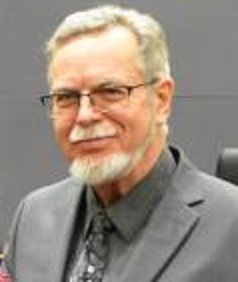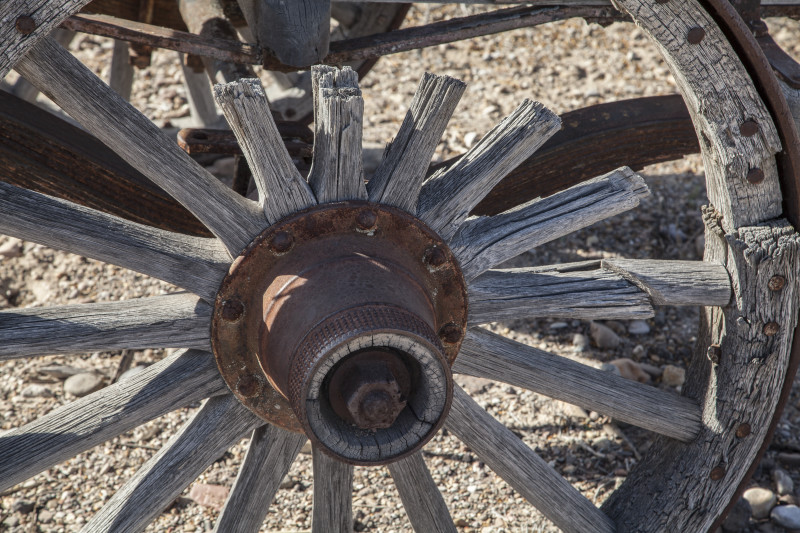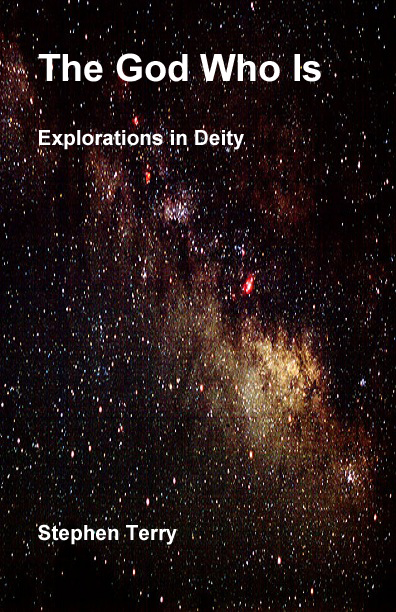
Stephen
Terry, Director

The
Role of Stewardship
Commentary
for the March 10, 2018 Sabbath School Lesson
 “There
is neither Jew nor Gentile, neither slave nor free, nor is there male and
female, for you are all one in Christ Jesus.” Galatians 3:28, NIV
“There
is neither Jew nor Gentile, neither slave nor free, nor is there male and
female, for you are all one in Christ Jesus.” Galatians 3:28, NIV
For thousands of years the speed of travel on land was
limited to the speed a horse could gallop. A global culture developed based on
ways to efficiently utilize the horse’s capabilities. Bridles, saddles and
eventually stirrups made it possible for the rider to maintain control of his horse
and remain firmly seated, even at break-neck speed or during the melee of
combat. In order to speed cargoes and more than one person about, various
wheeled conveyances were invented that could be hitched to horses, either singly
or as teams for larger and larger loads. Even the horses were altered to handle
increased loads, creating the mule. That fact featured prominently in the
television program “Death Valley Days” of half a century ago. The logo for the
show’s sponsor featured wagon loads of Borax being hauled by a twenty-mule team.
The cleaning product Twenty Mule Team Borax is still available today. While
horses are no longer a principle means of travel, the wheel remains an integral
element of transportation in modern cars and trucks.
As our lesson points out, wheels of ancient times
usually consisted of a wooden rim attached to a central hub with wooden spokes.
For reinforcement the rim would be fitted with an iron band to decrease wear.
While leaf springs were invented to lessen the shock of these wheels traveling
over a solid and rocky surface, the ride remained very rough compared with what
we are used to today. The lesson author sees in these wheels an allegory for
our faith, stating that the unique Seventh-day Adventist Sanctuary Doctrine is
the hub supporting the spokes and ultimately the rim, implying that if the doctrine
were to be altered in any way, the entire assemblage would collapse. Perhaps
this is an overstatement. Well-meaning though it might be, it assumes that our
faith is static and that there is no more possibility of progressing to deeper
understandings. It begs the question about what we are going to do for eternity
with all those years of life to educate ourselves when all the truth has
already been determined, sealed and set in concrete. There may be some justification
in challenging this lesson’s wagon wheel paradigm.
First of all, in the old Encounter Bible Study Series
that made use of Dukane Projectors and film strips linked to audio cassettes,
they used a similar allegory. But instead of using it to make the Sanctuary Doctrine
central to our faith, the hub was Jesus Christ, and we were the spokes. The
lesson then offered that as we move closer to Jesus at the hub, we also move
closer to one another. Unspoken were several other implications. For instance,
if we were not getting closer to one another, then likely we were not moving
toward Jesus, and if Jesus was not our focus at the center of it all, then like
the Sanctuary Doctrine allegory, the entire assemblage would be unable to
maintain its integrity. Perhaps considering how Seventh-day Adventist dogma has
evolved for over a century and a half, we might be safer having Jesus as the
hub of that wheel than one of our doctrines. We can trust in His steadfastness
in securing our salvation and the consistency of our faith. If we could not
have this trust, then the 23rd Psalm[i] would seem to be
pointless. Besides, there are some questionable assumptions with the Sanctuary
Doctrine that have dramatically affected our understanding of Christ’s role as
high priest.
Perhaps the most egregious is the effort to comingle
type and anti-type as though they were exactly the same. However, they are not.
The type was the wilderness sanctuary (later the temple), served by the
Levitical Priesthood. Their service was a continuous round of sacrifices following
an annual cycle culminating in the Day of Atonement. Although continuing, their
priesthood was never meant to be eternal, culminating instead in the
anti-typical, sacrificial love offering of Jesus on the cross. If there was any
doubt of that, it was punctuated with the rending of the curtain between the
holy and most-holy chambers of the temple, opening what had previously been
hidden to the eyes of everyone present. But in spite of that, even the Apostles
failed to grasp the significance until decades later when the temple sacrifices
were forcibly stopped by the Romans in 70 CE. Even Paul, the prolific writer
and author of grace-based theology was slow to grasp the point. He was still making
offerings at the temple when he traveled to Jerusalem.[ii] Even he apparently found it
difficult to abandon the type in favor of the anti-type. It should be no wonder
then that we might fall short in that area as well. In fact much of our doctrinal
base is founded on the assumption that we are still operating under that former
typical system.
We see in our clergy, if not the continuing embodiment
of the Levitical Priesthood, at least its apparent reincarnation. The elements
are hard to miss. Those ordained within the Seventh-day Adventist Church must
be male and are to be supported by the same tithing system as the Levites. The
system we call Financial Stewardship is a continuation of the old sacrificial offering
system, cleansed of the original gore. Although the official line is that these
are love offerings, guilt plays a major role in motivation with accusations of
robbing God, etc.[iii]
These “freewill” offerings play such a major role in church administration that
I doubt anyone has been promoted to either a lay or a clerical position of
responsibility based on their sterling character and largesse to the poor
without also their financial contributions to the organization, perhaps the
latter being more acceptable without the former rather than the other way
around. Also, like the Levitical Priesthood, women are disenfranchised from the
rewards of power and prestige that come from ordination and advancement to
positions of greater responsibility. When local church administrative
structures attempt to right that wrong, such as with the appointment in 2013 of
Sandra Roberts to be Southeastern California Conference President, the world
church, heavily invested in the perpetuation of the Levitical Priesthood, has continued
to do all in its power to unseat and chastise those involved.
However, we may need to re-evaluate our understanding of
the Sanctuary Doctrine which equates Christ with the Levitical Priesthood. We are
told by the writer of Hebrews that Christ is not Levitical. He is Melchizedekian.[iv] This is a profoundly
different, anti-typical priesthood, an eternal one, and just like the
Melchizedek that Abraham met when returning from battle, the King of Salem, the
priesthood is a royal one. No one from the tribe of Levi was a priest-king. Perhaps
this is why Jesus descended from the royal line of Judah and is called the “Lion
of the Tribe of Judah.”[v] This royal line replaced
the Levitical line. What is more, we are all ordained into that universal,
eternal priesthood. Peter confirms it by his reference to us as royal priests.[vi] That this appellation is
universal is shown by his use of the term to refer to an entire nation, an
entire generation. This does not sound like the gender-based caste system of
the Levitical Priesthood. Instead it sounds more like Paul’s egalitarian proclamation
above in Galatians 3:28.
Another factor supporting that we are included in the anti-type
rather than the type is the eternal nature of the Melchizedekian Priesthood. In
order to function effectively in such an office, the priests must have eternal
life, and indeed, that is what is granted through Christ’s intervention on our
behalf. The inclusiveness of this ministry is astonishing in comparison to the
type prior to the incarnation, death and resurrection of Jesus. How can such
inclusiveness then not be a part of proper priestly behavior? To not be inclusive
would seem to be operating in direct opposition to everything Jesus’ priestly ministry
in heavenly places is about. It would be like the spokes of the wheel attacking
one another and holding each other back while at the same time professing to be
reaching toward Jesus at the center.
If we were to ask the wagon master which spoke of the
wheel is most important, he would likely tell us that every spoke is equally
important and should be protected against breakage. Unfortunately, we get
caught up in matter-of-life-and-death defenses of doctrinal positions and place
those doctrines, which are only interpretations hardened into dogma, over the
lives and well-being of the very ones Jesus came to save – the sinners.[vii] We are all ordained to
that work with Jesus leading the way both by example and by instruction.
Stewardship is more than faithful and proper utilization of the money God has
entrusted to our care without squandering it. It also means we should not
squander the people whom God has called into ministry. We may wish to embrace
the anti-typical model lest when Jesus asks us to give account of those
individuals entrusted to our care, we respond we buried them because you are a
demanding Master and we feared to offend you by ordaining a woman. This is the
scenario of the Parable of the Talents, or as the NIV puts it the Parable of
the Bags of Gold. How does that apply? Simply this, Jesus would not have died on
the cross for a bag of gold, but He died for you and me. If the parable is
talking about bags of gold, then how much more so for how we treat those whom
God has called? It is time we opened the ministry to all whom God has called.
There is no excuse for burying that treasure.
